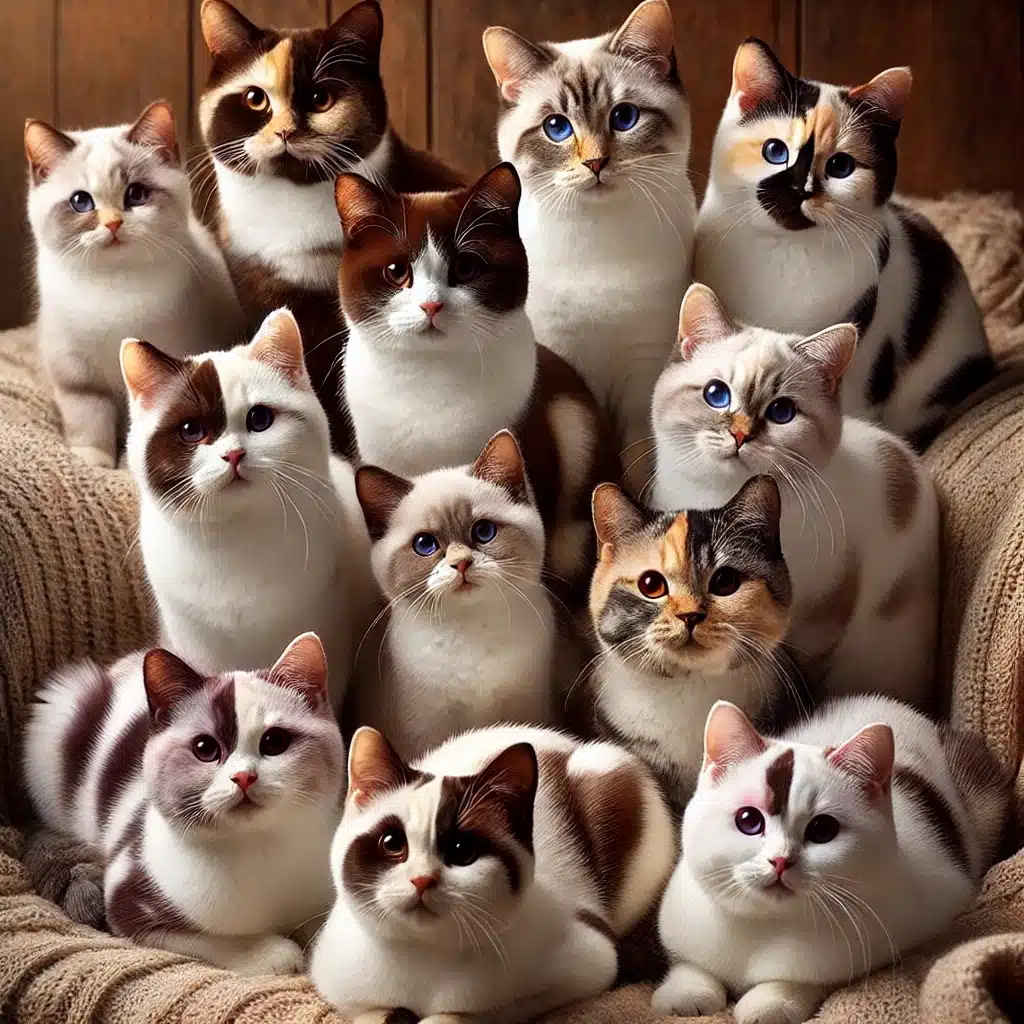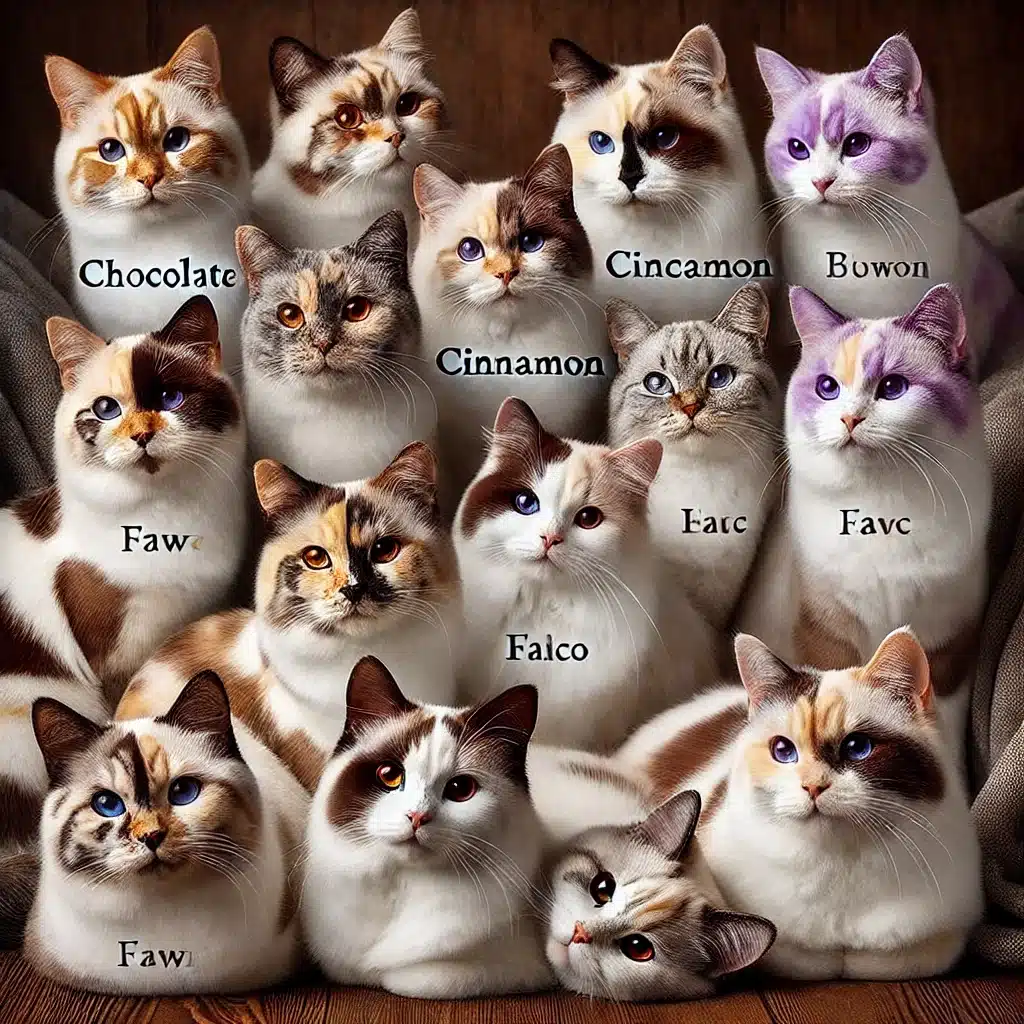If you’ve seen a cat with unique, eye-catching patches against a mostly white coat, you’re likely looking at a harlequin cat. Cat parents are often intrigued by these beautifully patterned felines – but what exactly makes a harlequin cat stand out?
For those curious about the specifics of this coat pattern, we’ll break down what defines a harlequin cat, explore its history, and even dive into personality traits and care tips. Harlequin cats bring something special to the bicolor family, and By the end, you’ll know exactly what sets these striking felines apart and how to care for one if you’re thinking of adding a harlequin to your family. Their unique look features predominantly white fur with large, random patches of another color, often on the head, back, and tail. Understanding different cat colors and patterns, like the harlequin, helps give insight into the wide variety of beautiful coat combinations available in cats. These striking felines tend to be as endearing in temperament as they are in appearance, and with the right care, they make wonderful companions.
Table of Contents
ToggleWhat is a Harlequin Cat?
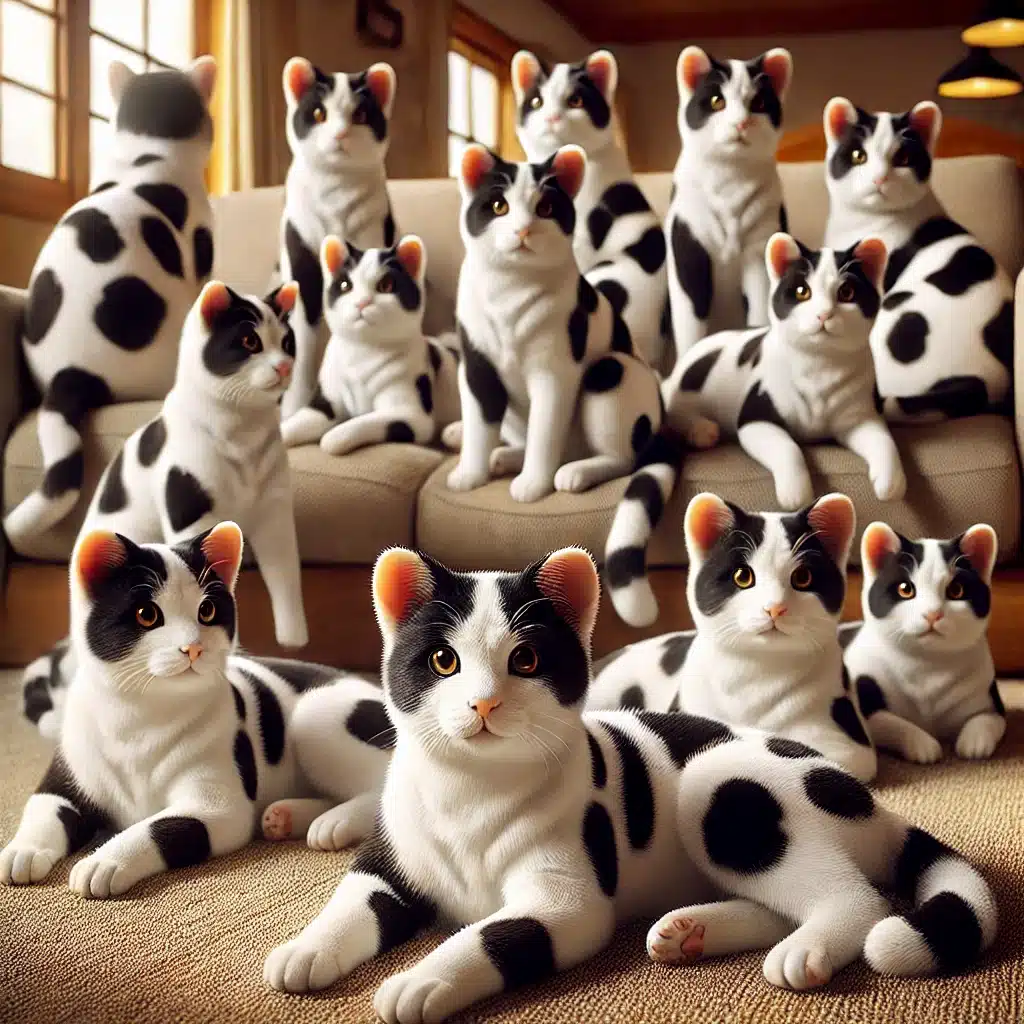
Harlequin cats are a delightful blend of beauty, charm, and intelligence, sporting a unique coat pattern that makes them stand out. Known for their predominantly white base coat accented by bold, irregular color patches, these cats are visually striking among bicolor cats. Their distinctive markings often resemble a harlequin’s costume, giving them a playful and whimsical appearance. This unique style is shared by several bicolor cat breeds, although each breed may have its own variation in pattern and color distribution. Harlequin cats are also known for their friendly and affectionate nature, making them popular companions for families and cat lovers alike.
Harlequin cat Personality and Temperament :
Harlequins are more than just a pretty coat! They’re playful and engaging, quickly becoming the heart of any household. With high intelligence, harlequins are fast learners who enjoy mastering new tricks and commands, adding a fun, interactive layer to their companionship.
These cats thrive on mental stimulation, so they love interactive play and games that challenge their minds. Beyond smarts, harlequins are known for their deep loyalty and affection, often forming close bonds with their families.
Many harlequins develop a special attachment to one “favorite” person, showing affection by following them around or curling up in their lap. For cat lovers seeking a companion that’s equal parts stunning, intelligent, and affectionate, harlequin cats offer a well-rounded, heartwarming experience.
The Fascinating Origins of Harlequin Cats: A Patchwork of History and Culture
Historical Background
The harlequin pattern, with its whimsical, patchwork style, has roots that trace back centuries. While this coat style doesn’t belong to a specific breed, the pattern itself is thought to have emerged naturally as cats were domesticated and selectively bred. The distinctive color patches – often seen in black, gray, or orange against a white backdrop – were likely influenced by genetic factors that became popular through selective breeding over time.
Harlequin Cats in Popular Culture
While not as famous as other coat types, harlequin cats have quietly made appearances in art and literature. These cats often pop up in historical paintings, particularly from European artists fascinated by the contrast of white fur with bold color patches. The appeal lies in their eye-catching, almost artistic appearance, adding a sense of playfulness and uniqueness to any scene.
Why Are They Called Harlequin?
The term “harlequin” actually comes from Italian theater, inspired by the iconic Harlequin character known for wearing a colorful, jester-like costume covered in contrasting patches. Just like the theatrical Harlequin, harlequin cats feature bold, irregular spots that create a lively, whimsical effect – almost like a cat in costume! This name perfectly captures the fun and spirited nature of their striking coat pattern Are Harlequin Cats a Good Fit for You?
Are Harlequin Cats a Breed?
Types, Colors, Breeds, and Markings of Harlequin Cat Coat Patterns
Harlequin cats are not a specific breed—they are defined by their unique coat pattern. The term “harlequin” refers to a predominantly white coat with random, irregular patches of one or more colors, making them visually distinct. This pattern can appear across many breeds and mixes.
Black and White Harlequin Cats / Cow Cats
Black and white harlequin cats are one of the most recognizable and beloved variations of bicolor cats. Affectionately nicknamed “cow cats” or “moo cats,” their bold black patches against a bright white coat mimic the patterns of Holstein-Friesian dairy cows. “Cow cats personality” is playful, engaging and fast learners, with whimsical look makes them an instant favorite among cat lovers.
These “cow cats” often steal the spotlight with their charm, but there’s some fun banter in the feline world! While tuxedo cats flaunt their elegant full-black suits, cow cats humorously claim they had to “sew together scraps” for their outfits. Of course, it’s all in good fun—cow cats know they’re just as lovable as their tuxedo cousins!
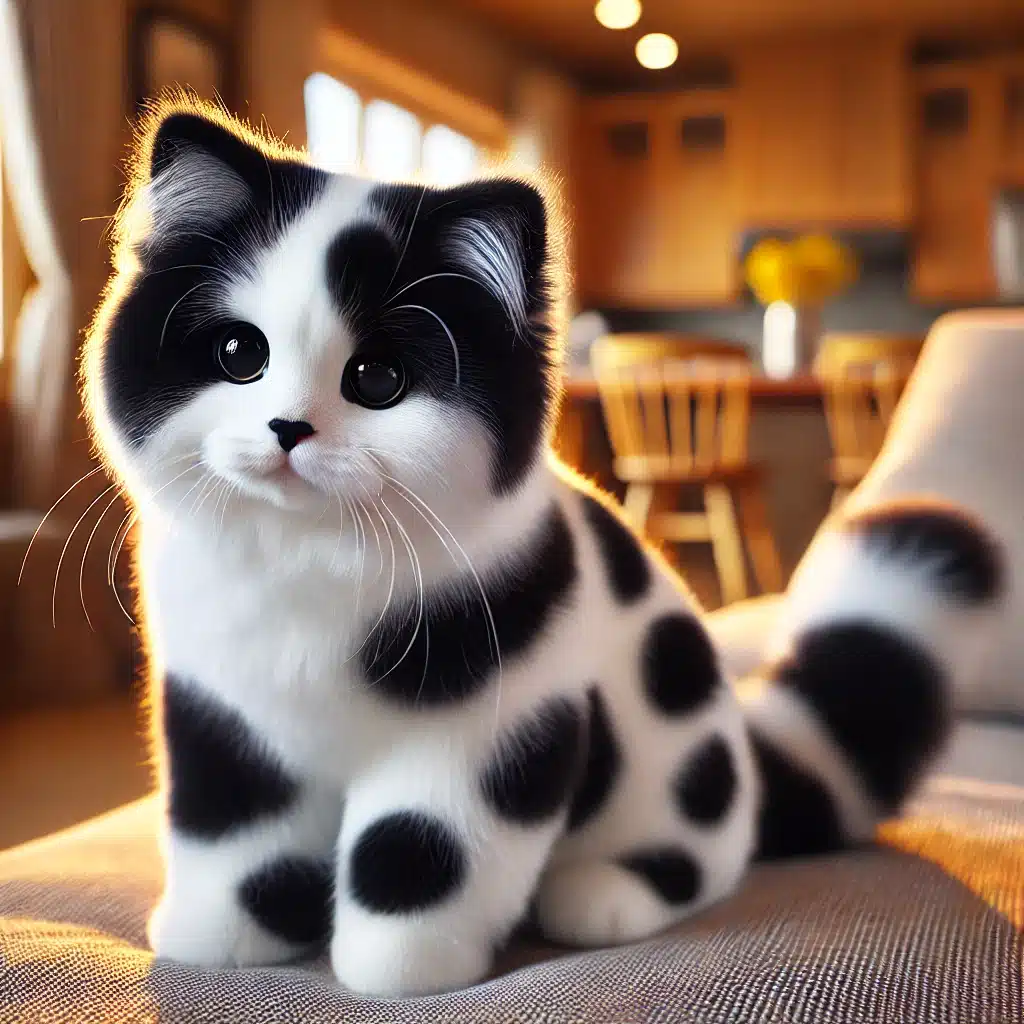
Breaking Down the Pattern
If you’re curious about the specifics, black and white cow cats fall under the bicolor cat category. Here’s how their patterns are commonly defined:
- Cap-and-Saddle: More white with black “cap” patches on the head and a “saddle” patch on the back.
- Mask-and-Mantle: More black, with a black mask covering the head and mantle-like markings running from the head to tail.
Cow cats usually sit somewhere between these two patterns, with their unique spots creating a balance of black and white. Most often, these cats are domestic shorthairs, but the cow pattern isn’t exclusive to one breed.
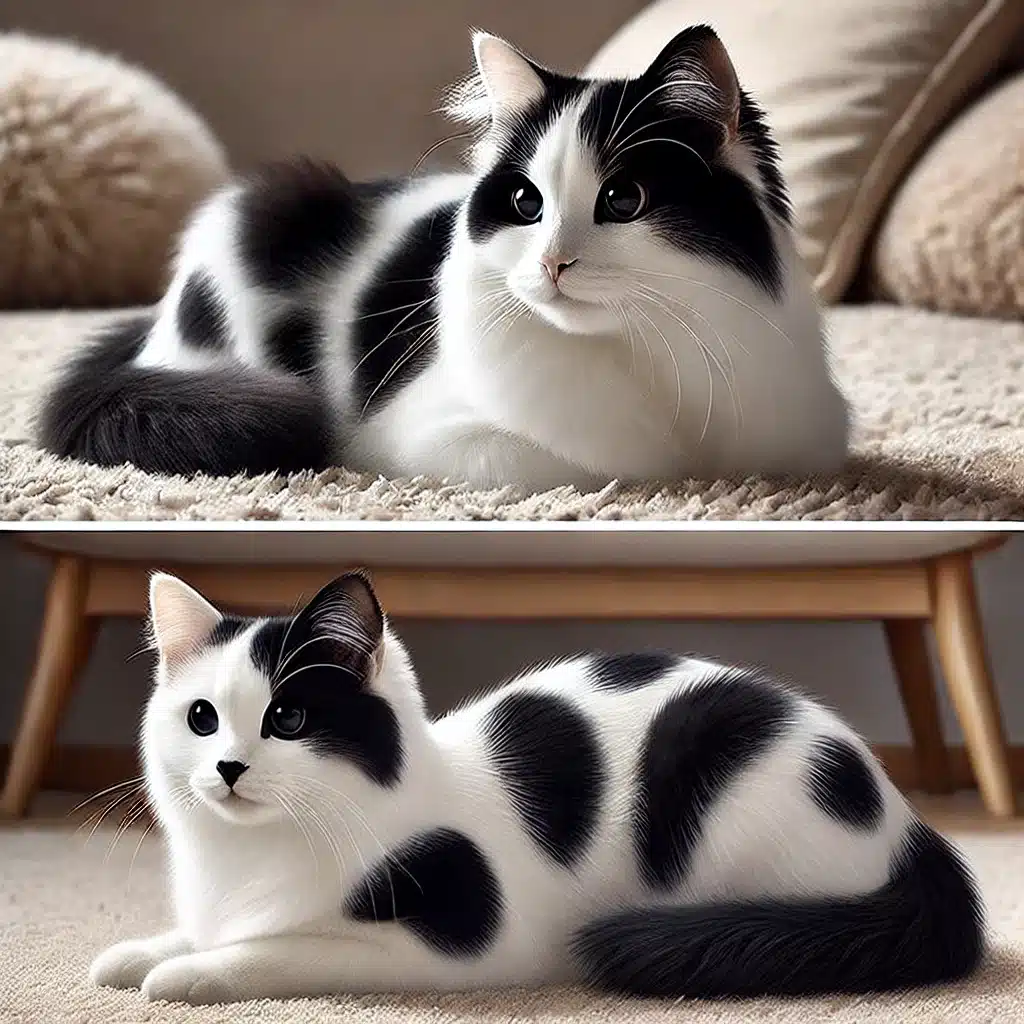
Types of Color Combinations for Harlequin Cats
While black and white is the most common, harlequin cats can display a variety of color combinations, including:
- Chocolate (brown) and white
- Cinnamon (light brown) and white
- Red and white
- Blue (gray) and white
- Lilac (lavender) and white
- Fawn and white
- Cream and white
- Calico (tricolor)Orange Harlequin cats: with patches of white, black, and orange.
- Tabby markings: Harlequins can also feature tabby stripes or spots within their colored patches.


Unique Features of Harlequin Cats
- Tricolor Possibility: Harlequin cats can sometimes be tricolor, like calico, with white as the dominant color and patches in two other colors—often black, orange, or gray. These colorful patches makes them stand out from other bicolor cats.
- Tail Consistency: One of the distinct characteristics of harlequin cats is their tail. Unlike some other coat patterns, the harlequin’s tail is usually a solid color that matches the other color patches on their body.
Cat Breeds That Can Have a Harlequin Coat Pattern
The harlequin pattern can appear in both pedigree and mixed-breed cats. Common breeds that may showcase this pattern include:
- British Shorthair
- Colorpoint Shorthair
- Maine Coon
- Munchkin Cat
- Japanese Bobtail
- Persian Cat
- Turkish Van
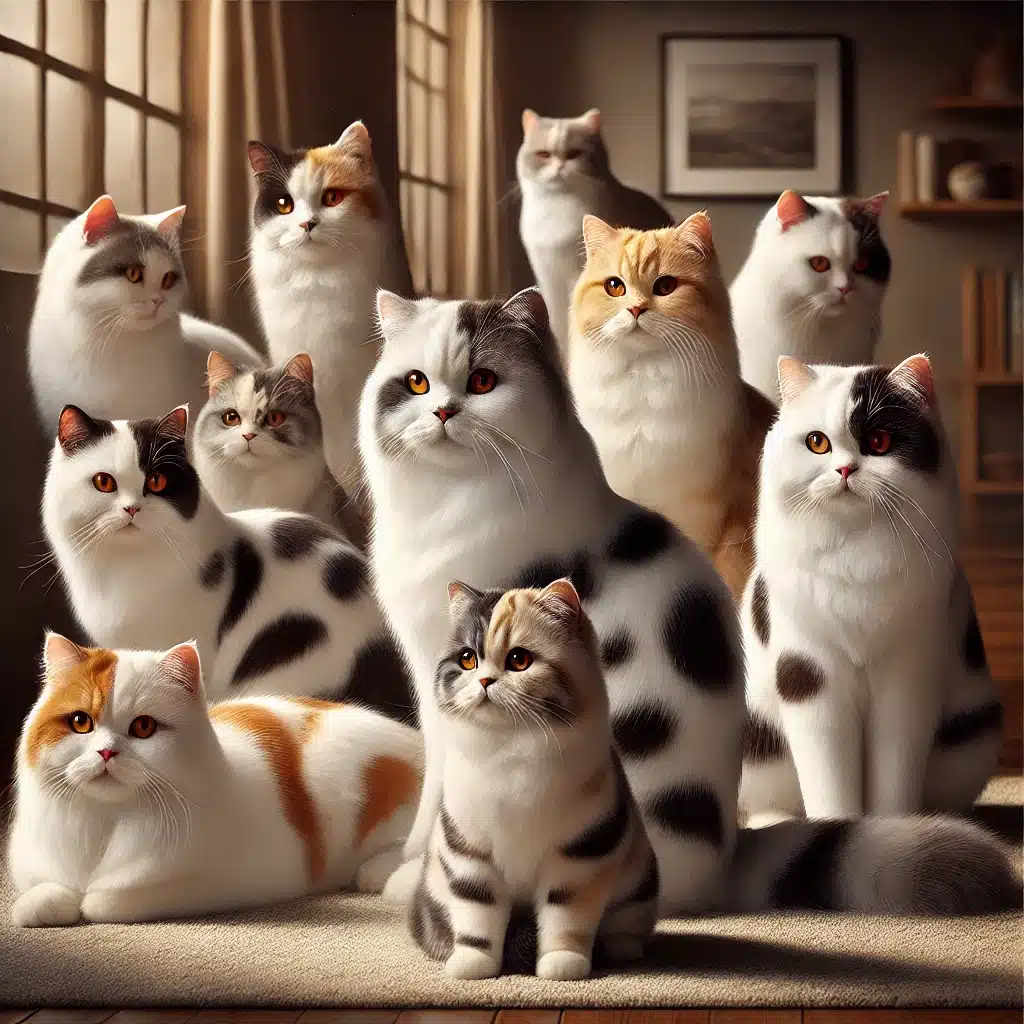
The Chinese Harlequin:
The Chinese Harlequin is a shorthaired white cat with small black or grey patches on the head and body, paired with a solid black tail. Despite its name, this unique breed originated in the U.S.
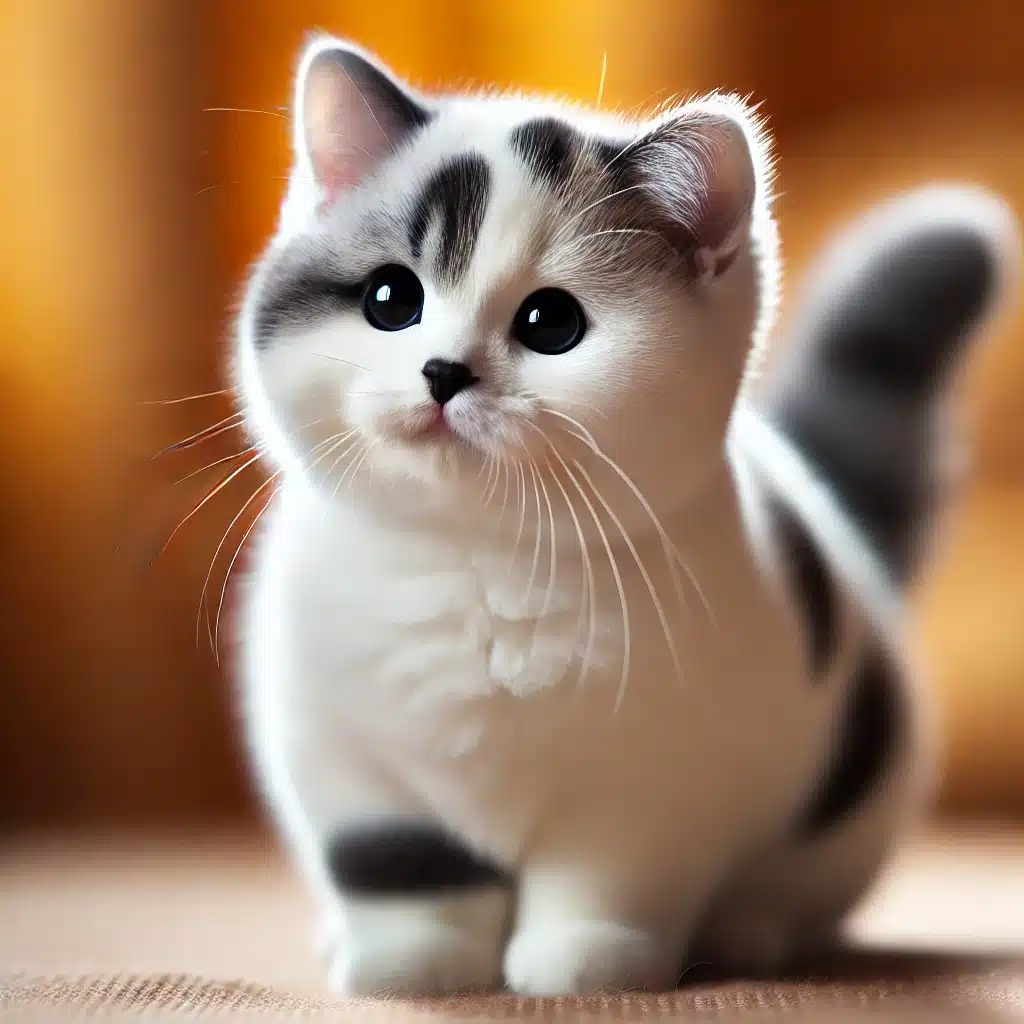
Health and Genetics
The Role of White Spotting Genes
The beautiful harlequin coat pattern is thanks to what’s called the white spotting gene. This gene influences the distribution of white fur on a cat’s body, creating the striking mix of white and colored patches characteristic of harlequin cats. While this gene doesn’t impact the health of the cat.
- Not Breed-Specific: Since this pattern isn’t tied to one breed, it can appear in a variety of cats—from Persian to Domestic Shorthair.
Health Watch
Harlequin-patterned cats are generally as healthy as any other cats, but a few factors to keep in mind for their well-being include:
- Grooming Needs: Coat care will depend on the breed of your harlequin cat. For example:
- Longhaired breeds like Persians or Norwegian Forest Cats need regular brushing to prevent matting.
- Shorthair breeds such as British Shorthairs require less frequent grooming, but a weekly brush will help remove loose fur.
- Sun Protection: Cats with more white fur are more prone to sunburn, especially on exposed areas like their ears and nose. If your harlequin cat spends time in sunny spots, consider limiting sun exposure or applying pet-safe sunscreen.
- Diet and Skin Health: A balanced diet with Omega-3 and Omega-6 fatty acids can keep their coat shiny and skin healthy. This is especially helpful for maintaining the quality of their white fur, which can show stains or dullness more easily.
By understanding the genetic roots of their unique coats and tailoring care based on their breed, you can ensure your harlequin cat stays healthy and vibrant.

